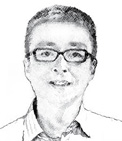Me, myself and I: showcasing the power of women
All art has educational aspects. The exhibition at the city’s Himalayas Museum, “Impersonating Myself / Becoming Myself,” which aims to showcase the power of women, features more than 40 photographic and video works of 22 women artist from China and Israel.
“I chose artists who care about issues that relate to the feminine identity: preserving life, keeping harmony with nature, impersonating themselves as a means to realize dreams and achieve the full human potential of women,” said curator Shoshan Brosh-Levitt. The 70-year-old has been working with Chinese researcher Zhang Fang on this exhibition for the past four years.
Every work in the exhibition takes us to a different human and historical sector, or a social and mental realm, in which women live intensively. Despite the fact that similarity rules over most of the exhibits, Chinese artists, compared with their Israeli counterparts, “go deeper and stronger into themselves,” said Brosh-Levitt.
Chinese artist Qian Ruya challenges the Gordian knot between women and dolls in her series “What You Collect Is Part of Yourself.”
Director Liu Qianyi is seen stamping on a heart, wearing her high-heel shoes — a symbol of women — in her black-and-white film titled “Ten Lai Lia,” a term from “I Ching” (The Book of Changes), in which she seeks to find strength and meaning of her life.
While Israeli artists Tal Shochat and Alex Kurbatov take photos to challenge the status of women as immigrants, Chinese artists Xing Danwen and Wen Hui shoot videos to deal with the connection, demands and inter-generational gaps between mothers and their daughters.
“Listen to My Third Grandma’s Stories” is an interview between artist Wen and her great-aunt who had experienced the turbulent decades of social movements after 1949.
Meanwhile, Israeli artist Michal Heiman goes even further. She traces back to a woman who lived in London in an asylum for mentally ill women in 1855, and decides to create a new community of people who protect her and give her an alternative life.
Wu Dandan and Hu Jiayi look differently at women’s
- About Us
- |
- Terms of Use
- |
-
 RSS
RSS - |
- Privacy Policy
- |
- Contact Us
- |
- Shanghai Call Center: 962288
- |
- Tip-off hotline: 52920043
- 沪ICP证:沪ICP备05050403号-1
- |
- 互联网新闻信息服务许可证:31120180004
- |
- 网络视听许可证:0909346
- |
- 广播电视节目制作许可证:沪字第354号
- |
- 增值电信业务经营许可证:沪B2-20120012
Copyright © 1999- Shanghai Daily. All rights reserved.Preferably viewed with Internet Explorer 8 or newer browsers.


